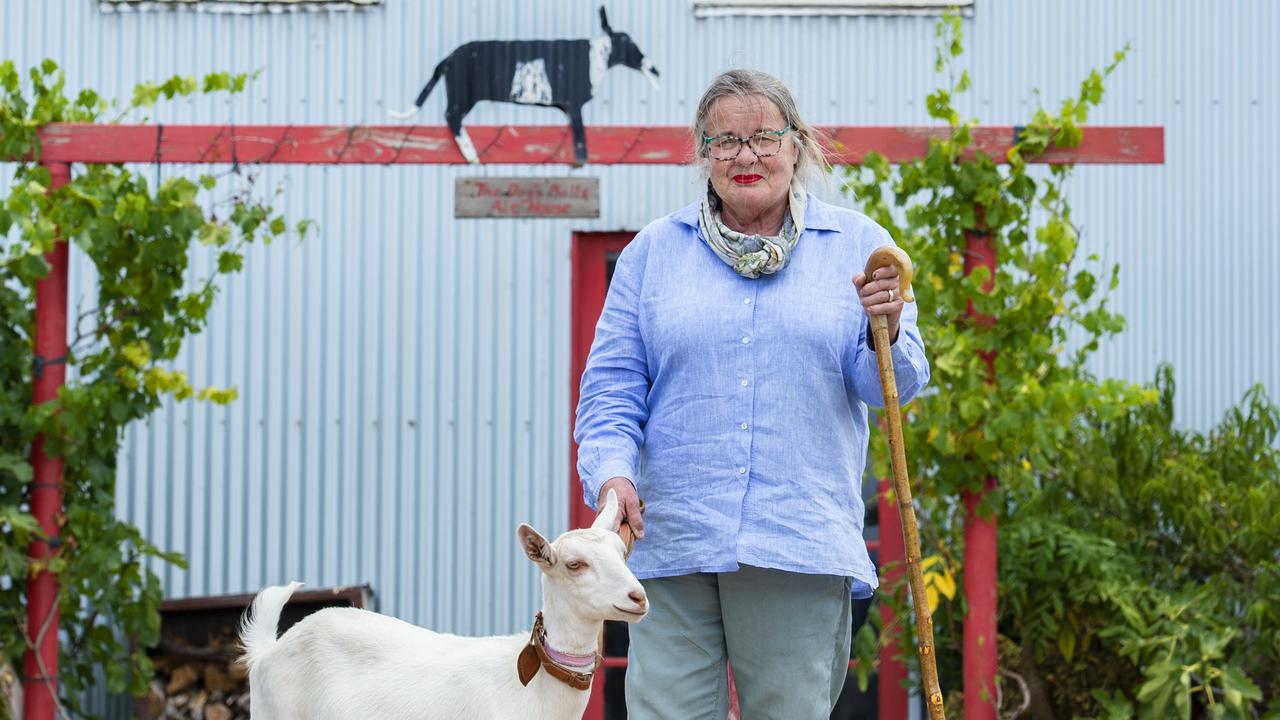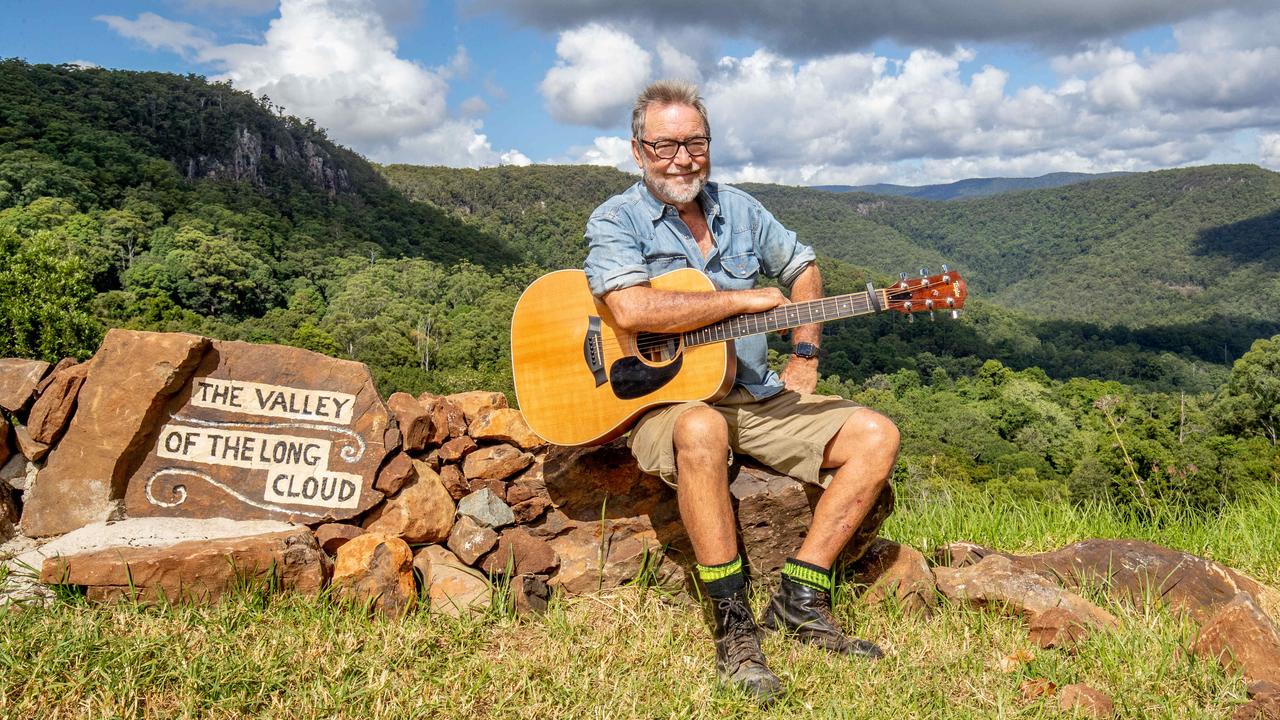Bridgewater’s Linda Watson on her Secret Platypus clothes and gallery
Find out how “wearable art” has proved a perfect fit for Linda Watson. And a special group of indigenous artists feature heavily in her work.
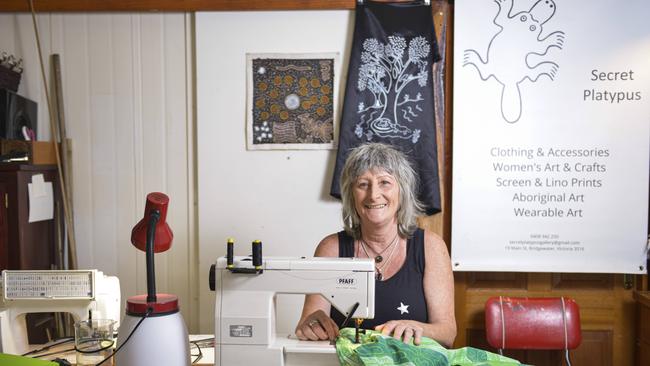
LINDA Watson was just seven years old when she started making her own clothes.
One of 10 children, Linda says she “wasn’t impressed” by the hand-me-downs she was getting from her older sisters and cousins.
“By the time I was 12, I was making clothes for all my little sisters as well,” Linda recalls.
After many years in and out of working in retail and fashion, Linda realised her dream of opening her own shop last February — Secret Platypus Women’s Art and Craft Gallery, in Bridgewater in central Victoria. It is here Linda sells clothes and other items she has made, such as bags and purses.
Some of the fabrics in her garments are printed with her own artwork (the platypus, a favourite animal for Linda, is a popular motif).
But her creations show off not just her own skills — some of it also promotes the work and culture of indigenous artists.
Linda also uses fabric sourced from the Babbarra Women’s Centre in Maningrida in Arnhem Land. This fabric carries prints designed by female indigenous artists from the centre, and Linda uses it to create “wearable art”.
Secret Platypus also stocks Aboriginal artwork; books on indigenous history and culture; leathergoods and jewellery; locally sourced natural soaps and body products; and other arts and crafts, some local and some from the Northern Territory.
“People walk in the door and look around and go ‘oh my god’,” Linda says.
“They had never seen anything like it outside the capital cities.”
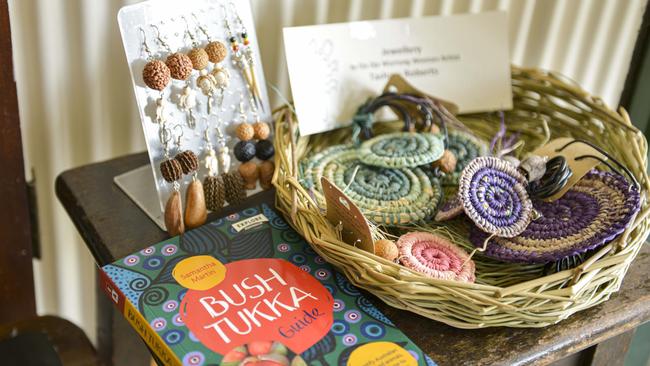
Linda was born in Dingee, about 50km north of Bendigo. Initially her family was on a dairy farm, but when it was converted to beef they moved into Bendigo.
Linda says clothes-making came naturally — her own grandmother, who died when she was two, was a dressmaker, so it’s arguable it was in her blood — but she also credits her high school sewing teacher, who worked as a dressmaker and model, with teaching her tailoring and other skills.
Another story that Linda proudly recalls is also from her teenage years, when she won a prize at the Bendigo Show for a pure wool, olive green, fully lined and tailored women’s suit she had made.
Through her 20s and early 30s, as well as working in retail, Linda made wedding dresses. Then, about 15 years ago, she moved to Darwin, where three of her sisters were living at the time. “I went in the dry season for a holiday two years in a row, and the third year I said I may as well just stay here,” she says.
When she first moved to Darwin, Linda had a market stall with her own clothing, but she then got a job in community services, which she loved.
But a plan to one day open her own shop with her own designs — and using fabric with her own artwork on it — continued to bubble away in her head. And Bridgewater had always been the place Linda wanted to settle. A nearby site on the Loddon River had been a family favourite camping spot for more than 35 years, and when she lived in Bendigo, Linda would drive out on hot days so she could go for a dip.
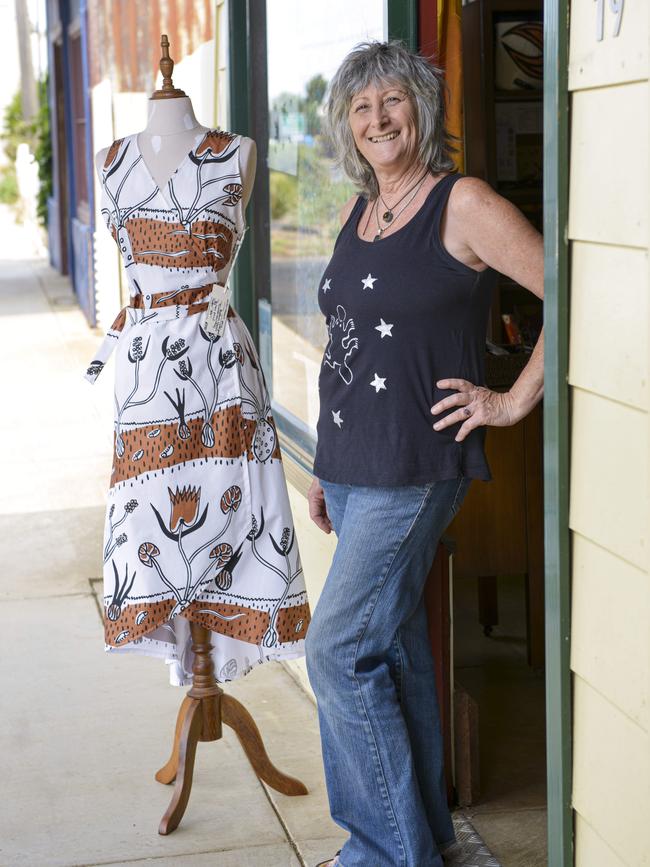
“It’s my favourite little river, favourite little spot,” Linda says. “We bought a little old cottage that needs a lot of love — my partner (Brendan) is a carpenter, that’s really lucky. So now I’m living in my favourite spot.”
Linda and Brendan, moved to Bridgewater last February, and opened the shop about three weeks later.
She had been sewing for a year, building up stock for the shop (all of her garments are made with natural fabrics).
One of her sisters, Cindy, owns Sister7 gallery in Darwin, which showcases indigenous women’s artwork. The sisters made plans to work collaboratively — Linda exhibiting and selling Sister7 artwork at Secret Platypus, and Cindy selling Linda’s garments in Darwin.
Using Babbarra fabric in some of her clothing and other designs melds those two ideas together, combining indigenous artwork and clothing into a special fashion statement.
Linda believes people want to learn more about indigenous culture and history, and show their support. An example of that is when she decided to close Secret Platypus on January 26 this year, but was open on the next day, a Monday — and sold out of copies of Bruce Pascoe’s book on indigenous agriculture, Dark Emu, and indigenous language maps. “I was overwhelmed with how many people wanted to take something home specifically on that weekend because they didn’t know how else to support them,” she says. “They also wanted to take something home to educate themselves, family and friends.”
As well as highlighting indigenous women, Linda also showcases other art and creations by local women, a theme she hopes to continue to expand. She has been invited to showcase Secret Platypus designs at the Women on Farms Gathering later this month.
The shop and gallery itself will remain open from Fridays through to Mondays until the end of April, when, as she did last year, Linda plans to head back to the Northern Territory until the end of September. She harbours expansion plans for both stock and space, and also hopes that next year the shop with open on weekends during the winter months.
MORE COUNTRY LIVING
POETIC PRAISE FOR WOMEN ON THE FARM

